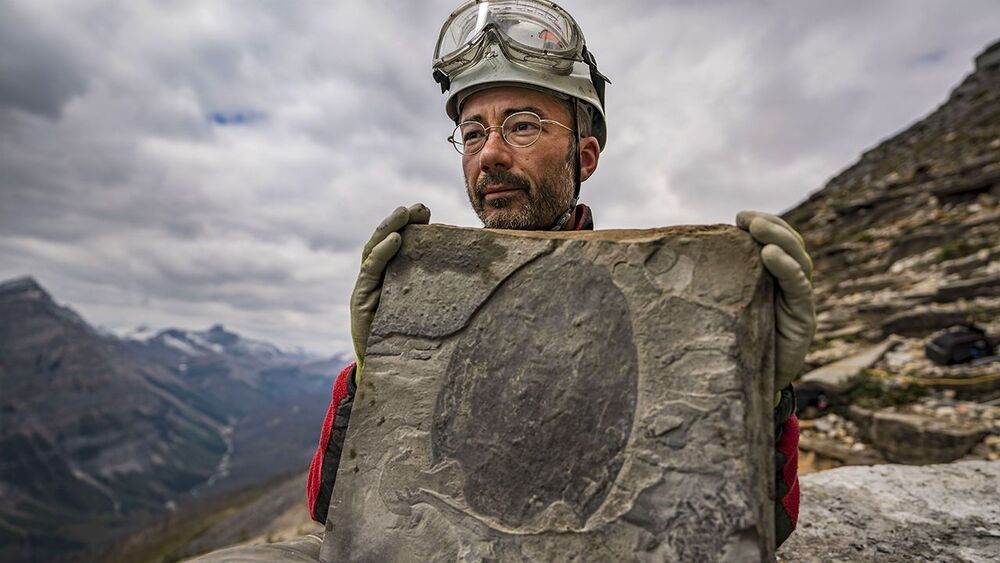Circa 2018
KOOTENAY NATIONAL PARK IN CANADA— The drumming of the jackhammer deepens. Then, a block of shale butterflies open, exposing to crisp mountain air a surface that hasn’t seen sunlight in half a billion years. “Woo!” says paleontologist Cédric Aria of the Nanjing Institute of Geology and Palaeontology in China, bracing the top slab of rock upright.
Its underside bears charcoal-colored smudges that look vaguely like horseshoe crabs or the Millennium Falcon from Star Wars. “It’s a spaceship landing area here,” says expedition leader Jean-Bernard Caron, curator of invertebrate paleontology at the Royal Ontario Museum (ROM) in Toronto, Canada.
Those “spaceships” are carapaces, molted onto a long-vanished ocean floor by a species new to science. This field season they’ve been spilling out of the rocks here, where Caron’s team has spent the past few years unearthing groundbreaking animal fossils from the Cambrian period, the coming-out party for animal life on Earth. During the Cambrian, which began about 540 million years ago, nearly all modern animal groups—as diverse as mollusks and chordates—leapt into the fossil record. Those early marine animals exhibited a dazzling array of body plans, as though evolution needed to indulge a creative streak before buckling down. For more than a century, scientists have struggled to make heads or tails—sometimes literally—of those specimens, figure out how they relate to life today, and understand what fueled the evolutionary explosion.
